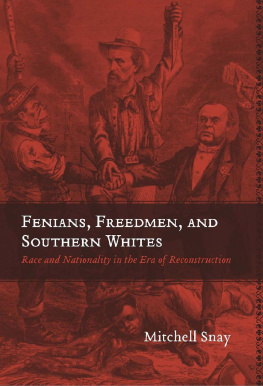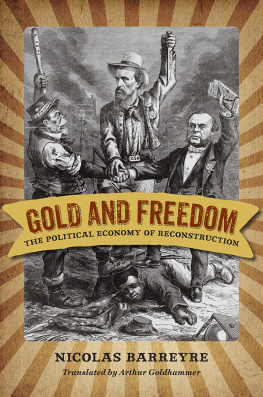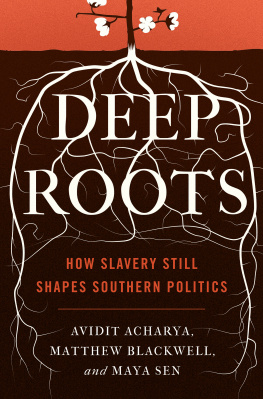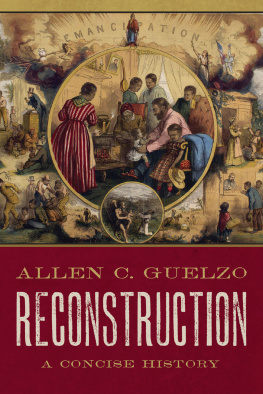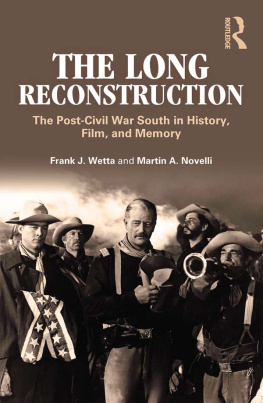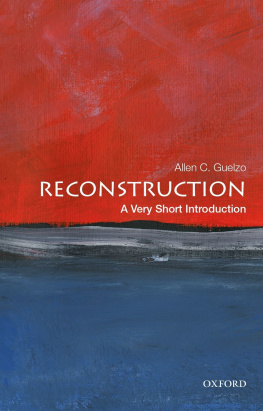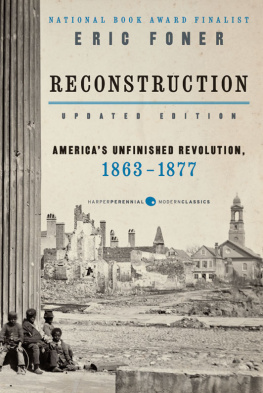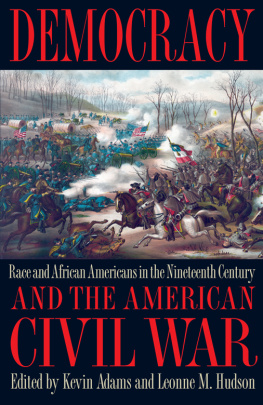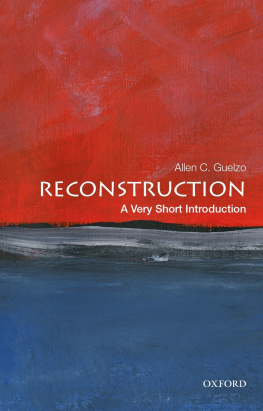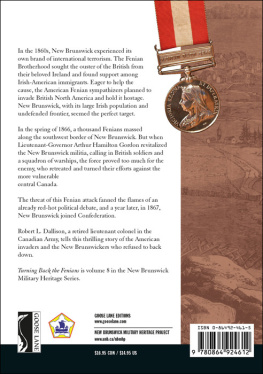CONCLUSION
After the Battle of Ridgeway, American Fenians continued to see an invasion of Canada as a means of attacking Britain. In 1870, John ONeil led another expeditionwith a smaller force of about two hundred menacross the border. This time the Canadian militia was prepared and repulsed the Fenian invaders. The Battle of Eccles Hill was a humiliating defeat for the Fenians. Not one Canadian soldier had been wounded or killed. Moreover, ONeil was captured by U.S. marshals for violation of the neutrality laws. He was found guilty and sentenced to two years imprisonment, although President Ulysses S. Grant commuted his sentence. ONeil apparently could not shake his Fenian fever. He led one more abortive attempt to invade Manitoba a year later. Afterward, ONeil settled in Nebraska, where he died in 1878.
The fate of the Fenian movement in the United States paralleled that of John ONeil. The Brotherhood in New York was so broke by 1870 that they could not even pay for a telegram sent from the Canadian front. John OMahoney, one of the founding fathers of the Fenian movement, died in poverty in a small, unheated room in New York City in 1877. The Fenian Brotherhood officially disbanded in 1886. Yet the spirit lived on. John Phillip Holland of New Jersey, one of the last Fenian holdouts, devised a plan to harass British shipping by sending underwater boats to destroy English ships. Holland built a few prototypes of what would later become the submarine. It would be the Germans in 1914, however, who would successfully attack English shipping with torpedoes.
Irish American nationalism persevered through the Clan na Gael, a more secret association founded in 1867 by Jerome J. Collins. Like the Fenians, they were dedicated to using force to achieve Irish independence and established a Skirmishing Fund to finance terroristic activities. One of their members was Terence V. Powderly, future leader of the Knights of Labor. During the 1880s, Irish American nationalists continued to follow the lead of their Irish brethren. Charles Stewart Parnell led a New Departure movement, which stressed constitutional reform through the Parliamentary Party in Ireland. Michael Davitt centered nationalist efforts around land reform, organizing the Land League of Ireland in 1879. An American Land League was established in 1880 and became quite popular during the early part of that decade. On Easter 1916, Irish nationalists staged a revolt against British rule. A few years later, Ireland was divided between a northern part that remained British and a south that became an independent Irish republic.
The Union Leagues, after their peak years of 18671869, also went into decline. They gradually dissolved after they had achieved their primary function of mobilizing black voters into the Republican Party. In Georgia, they began to disintegrate after the 1868 election and had virtually disappeared by the early 1870s. James Justice, a Republican lawyer and state legislator in North Carolina, believed that the Leagues died out after 1868. Similarly, Essie Harris, a black North Carolinian, claimed in 1871 that the Leagues broke up some two years [ago]may be more. This chronological pattern seems to fit other states as well. At the Ku Klux Klan hearings in 1871, future Democratic leader John B. Gordon of Georgia said he had heard nothing about the Union Leagues for a few years. Native white Republican John R. Smith, editor of the Meridian Chronicle, told a similar congressional committee that the Mississippi Leagues were pretty well lost sight of since the fall of 1869. By the 1870s there was little evidence of League activities.
Yet Union League efforts continued. The national organization revived its interest in southern affairs in the late 1870s, publicizing the plight of the African American in the post-Redemption South. Remnants of the League in the South continued to work for civil rights during the 1880s. In Louisiana, they were active in promoting Kansas immigration. More important, the tradition of black political participation that owed so much to the Union Leagues did not die after Reconstruction. Even if state power lay in Democratic hands, blacks served in county and state offices throughout the South during the 1870s and 1880s. From 1876 to 1890, sixty-nine African Americans served in the Mississippi House of Representatives. When expedient, southern blacks joined independent parties, such as the Greenbackers, Readjusters, and Populists, to gain access to political power. In addition, regional strongholds of black political power like North Carolinas Second Congressional District and Fort Bend in Texas remained. By the end of the nineteenth century, however, it became clear that for several generations black political participation in the South was at an end. Henry Cabot Lodges Federal Elections bill of 1890 never became law. That same year, the constitutional convention of Mississippi inaugurated a series of measures to deny African Americans the vote, variations of which were later adopted by many southern states. By 1894, Congress had repealed all its protection of federal elections. Disfranchisement, accompanied by segregation, set the pattern of southern race relations well into the twentieth century.
The escalating violence of the Ku Klux Klan in the late 1860s finally drove the Republican-dominated Congress into taking action. In 1870 and 1871, it passed a series of Enforcement Acts to protect black voting rights. In April 1871, Congress enacted a more sweeping Ku Klux Klan Act that made certain crimes punishable under federal law. Attorney General Amos T. Akerman and Solicitor General Benjamin Bristow vigorously pursued prosecution under these laws. Hundreds of Klan members were indicted and imprisoned in North Carolina. Federal troops were sent into South Carolina. These measures were effective in curbing Klan violence for the remainder of Reconstruction, but a tradition of white terrorism against blacks and Republicans had been set. In the late summer of 1874, White Leagues dedicated to the violent overthrow of Republican governments arose in Louisiana and Mississippi. In Red River Parish in Louisiana, White League violence was responsible for the murders of three relatives of Republican political leader Marshall H. Twitchell. In New Orleans, the Crescent City White League proved crucial to driving Republican governor William P. Kellogg out of office. The White Leagues and Ku Klux Klan faded in the historical record during the remainder of the nineteenth century, though terroristic attacks on southern blacks persisted.
At the turn of the twentieth century, the Ku Klux Klan of Reconstruction enjoyed a kind of cultural rebirth. Historian Walter L. Fleming spoke appreciatively of the Klan, and Thomas Dixons novel The Clansman and the film it inspired, The Birth of a Nation, glorified the Klan and sanitized its violent past. In 1915, an Atlanta lawyer, no doubt inspired by the movie, took a group of men up to Stone Mountain on Thanksgiving night, burned a cross, and founded the second Ku Klux Klan.
Viewed in comparative perspective, the history of the Fenians, freedmen, and conservative southern whites in the late 1860s suggests some new meanings for Reconstruction. The postCivil War era occupied a distinctive stage in the history of Irish American nationalism and the racial consciousness of whites and blacks in the South. The period was characterized by semi-secret, fraternal, paramilitary societies: the Fenian Brotherhood, the Union Leagues, and the Ku Klux Klan. They had similar structures and adopted common elements of a political culture centering on countersubversion. The politics of Reconstruction strongly influenced all three groups, and the hegemonic force of Republican nationalism set limits to the separatist aspirations of southern whites, freedpeople, and Fenians. With a discourse largely informed by republicanism, it encouraged separatism along civic rather than ethnic or class lines. The common recourse among the three groups to the political language of republicanismthe language of liberty, slavery, democracy, and aristocracyalso suggests that Reconstruction was far more rooted in the political culture of the early nineteenth century than has been previously recognized. In this way, Reconstruction was a period that looked as much backward to the early nineteenth century as it did forward to the industrial capitalism of the Gilded Age.

